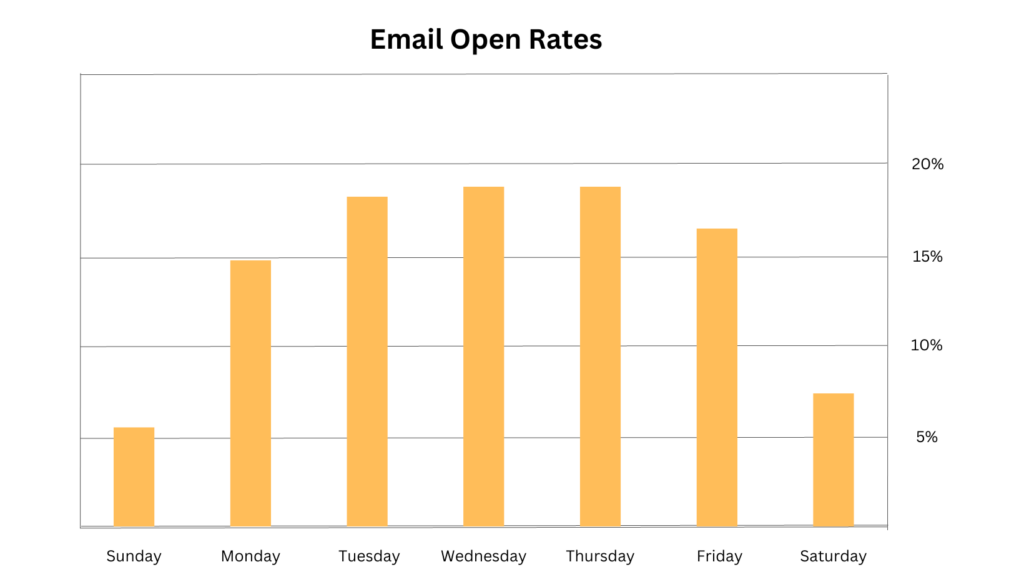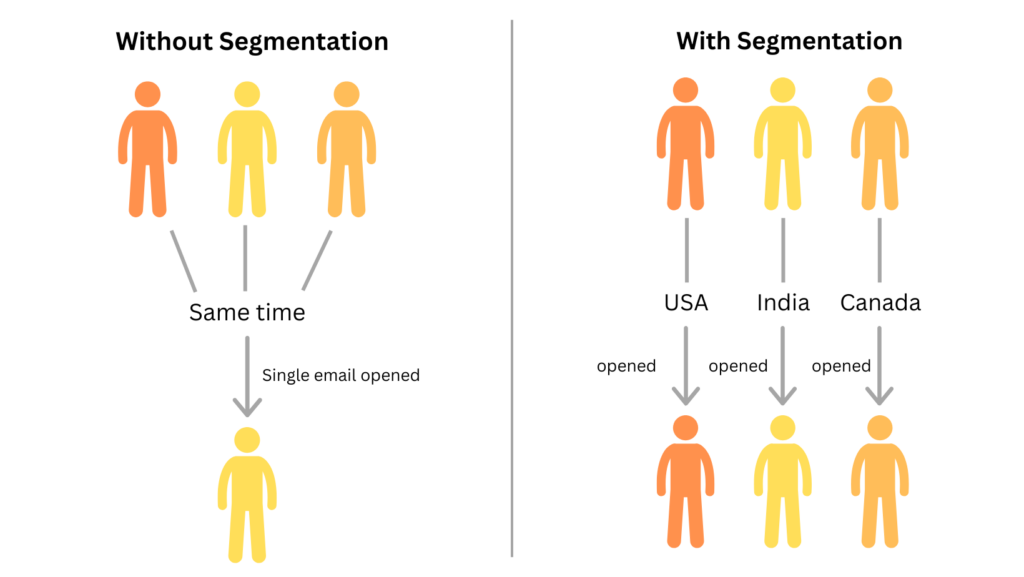You’ve spent hours refining your email content, polishing your call-to-action, and ensuring everything looks perfect. But if you send it when your audience is busy or not paying attention, it might go unnoticed.
Hence, timing holds significant importance, especially when it comes to capturing your recipient’s attention.
Wondering, when is the best time to send a marketing email? We have some valuable insights to share.
When is the best time to send a marketing email? Generic Advice
When it comes to email timing, you might have heard some common generic advice floating around. Let’s take a quick look:
1. Send Emails on Tuesdays and Thursdays:
These mid-week days are considered the best time to send a cold email. They are thought to be prime opportunities for higher open and click-through rates as people settle into their work routines.
2. Early Mornings or Late Afternoons are Best:
The belief here is that catching recipients during their commute or at the end of the workday increases the chances of your email being noticed. Generally, 9-11 am and 1-3 pm are considered the best times. MialChimp suggests 2 pm as the optimal time as per their records.
3. Avoid Weekends and Mondays:
Weekends are often deemed less productive for emails, and Mondays can be overwhelming for your audience as they tackle the start of their workweek.

Pitfalls in the Generic Advice
While generic advice serves as a starting point, it may not always apply universally. Here are some pitfalls to be cautious about, illustrated with examples:
Neglecting Audience Behavior:
Imagine you’re running a marketing campaign targeting night owls who are more active in the late evenings. Following generic advice to send emails during the day might result in missed opportunities to engage your night owl audience effectively.
To avoid this pitfall, take the time to understand your audience’s behavior and preferences. Pay attention to when they are most active, what type of content resonates with them, and how they interact with your emails.
Understanding their behavior patterns will help you align your campaigns with their habits. And that will be your best time to send a cold email. This increases the chance of your emails being opened.
Overlooking Time Zones:
Consider having an international subscriber base, spread across different time zones. Sending a time-sensitive offer without considering these differences could lead to potential customers missing out due to mismatched timing.
So, make sure to segment your audience based on different time zones before beginning your campaign.

Also, make use of a cold email automation tool to ensure that your emails reach recipients at the most opportune time.
Failing to Test and Iterate:
Suppose you follow the advice of sending emails on Tuesdays and Thursdays without conducting any A/B testing. In that case, you might miss out on finding the optimal day for engagement based on your unique audience’s behavior.
Hence, focus on conducting A/B tests with different days, times, and subject lines to identify what works best for your specific audience. Regularly analyze the results and optimize your email timing strategy accordingly.
Why it is Important to Tailor Your Timing as Per Your Audience?
Tailoring your email timing to suit your audience’s habits and preferences is crucial for building strong connections and maximizing engagement. Here’s why it matters:
Audience-Centric Approach: By understanding when your audience is most active and responsive, you can show them that their time matters. Thus, increasing the likelihood of them opening and engaging with your emails.
Increased Open and Click-Through Rates: Personalizing your email timing can lead to higher open rates and click-through rates as you deliver content when your audience is most likely to be attentive and receptive.
Enhanced Conversions and ROI: Connecting with your audience at the right time boosts the chances of converting leads into customers, leading to a higher return on your email marketing investment.
Conclusion: The answer to “When is the best time to send a marketing email?”
Conclusively, we can say that there is no ‘one-size-fits-all” answer to this question. Because it all comes down to your unique audience.
You see, every audience is different. They have their own habits, preferences, and daily routines.
What works wonders for one group of subscribers may not be as effective for another. That’s why you need a deeper understanding of who your audience is and what makes them tick.
So, focus on getting to know your audience better to find out when is the best time to send a marketing email.

Leave a Reply